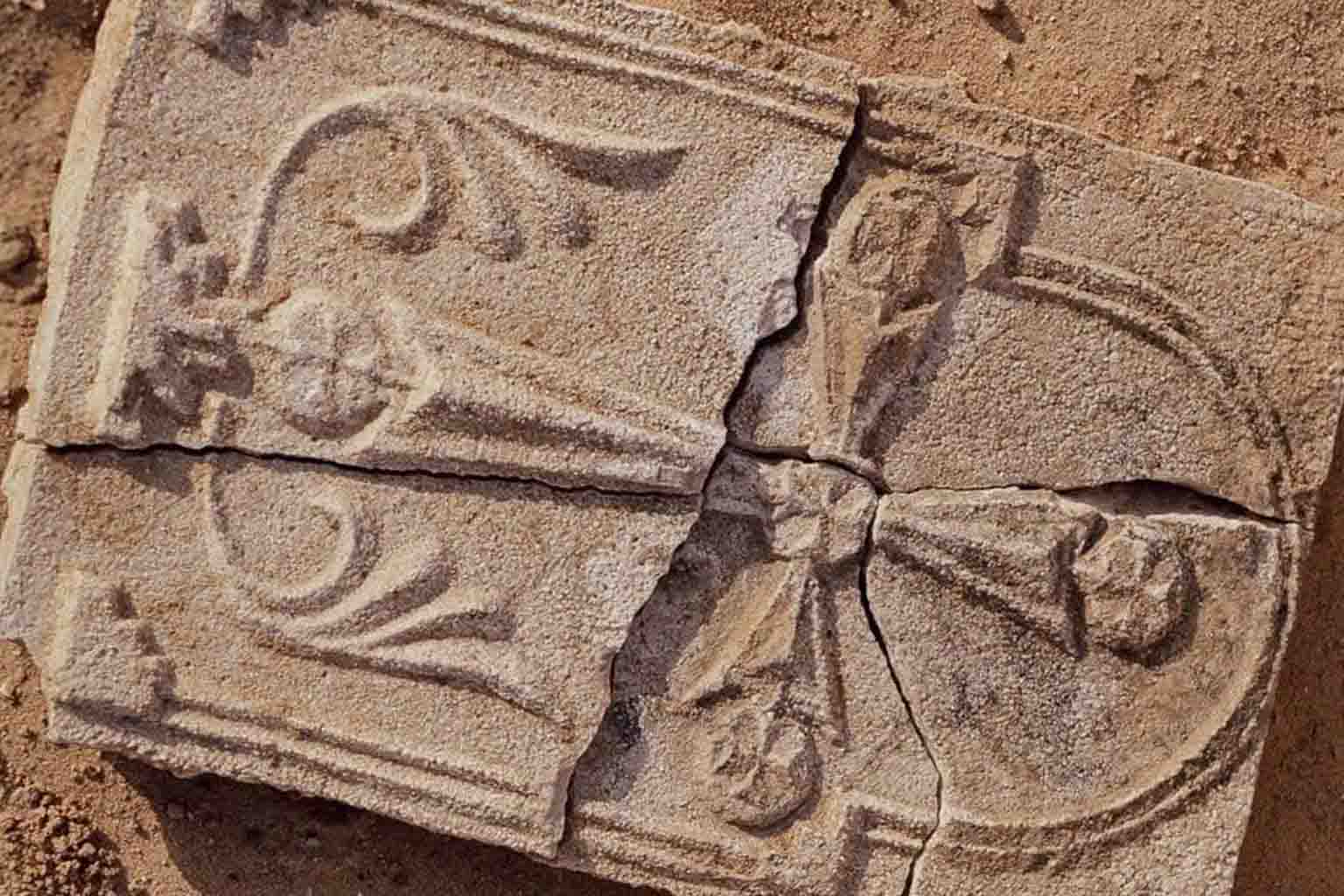An ancient cross has emerged from the sands of the Gulf, and it’s turning history on its head. Imagine a Christian community thriving more than 1,400 years ago in a place long thought untouched by early Christianity. Archaeologists are now uncovering evidence that challenges everything we assumed about the spread of the faith.
The recent discovery of this 1,400-year-old cross offers a rare glimpse into early Christian life in the Gulf region. Unearthed during excavations on Sir Bani Yas Island, the artifact carries distinctive religious symbols that reveal a community deeply connected to the broader Christian world, even in such a remote location. Experts say the cross could reshape our understanding of how Christianity expanded beyond traditional strongholds.
What makes this cross so remarkable is its symbolism. A stepped pyramid motif on the artifact represents Golgotha, the hill where Jesus was crucified, according to Christian tradition. Its presence so far from Jerusalem suggests that early Gulf Christians were not only aware of central Christian teachings but also revered them in their local practices.
The cross also features intricate regional designs that blend local artistic traditions with Christian symbols. This fusion shows how Christianity adapted visually to different environments, reflecting a faith that was both mobile and flexible. As the site’s lead archaeologist, Maria Gajewska, explains, “Every element of the cross integrates local motifs. It tells us that Christianity here was not only present but thriving, visually adapting to its surroundings.”
The artifact illuminates cultural exchange at a time when religion, trade, and art were closely intertwined. Early Gulf communities were part of a broader network of communication, sharing ideas and religious practices with distant regions, while still expressing a uniquely local identity.
This discovery challenges long-held assumptions that Christianity vanished from the Gulf region with the rise of Islam. Historically, scholars believed that by the seventh century, the religion was in decline across the Arabian Peninsula, replaced largely by pre-Islamic polytheism. But the cross, along with other artifacts, tells a different story : Christian communities were not only surviving—they were flourishing.
Earlier finds, including pottery, glassware, and the remains of a church and monastery, paint a picture of a vibrant religious community. One small bottle may have held rose water or anointing oil, hinting at well-established liturgical practices. The cross itself may have been mounted on a wall, a place where the faithful knelt in prayer. A fingerprint on the back adds a human touch, connecting us to the individuals who once worshiped there.
Hager Al Menhali, an archaeologist with the Department of Culture and Tourism, reflects on the discovery : “The plaster rested face down, and something about it caught my eye.” The careful placement and absence of destruction debris suggest the community left voluntarily, not due to violence—a mystery that raises questions about why these early Christians eventually departed.
The significance of this cross goes beyond religious history. The combination of Christian and local motifs demonstrates how early Gulf communities integrated into the surrounding culture. These Christians were not isolated—they engaged with local society, adapting religious expression in ways that honored both their faith and their environment.
The discovery reflects broader lessons about cross-cultural exchange in the region. Early Christians in the Gulf did not merely transplant practices from the Levant ; they engaged, adapted, and thrived in a new context. Mohamed Khalifa Al Mubarak, chairman of Abu Dhabi’s Department of Culture and Tourism, highlights the importance of these finds in showing the values of coexistence and understanding that have long been part of the UAE’s heritage.
This cross is more than an artifact ; it is a story of human resilience, creativity, and faith. Standing in front of it, you can almost imagine a community gathering to pray, trade stories, and celebrate rites while navigating life on a remote island. It reminds us that history is alive, waiting to be rediscovered in ways that challenge our assumptions.
Each discovery at Sir Bani Yas Island adds another chapter to the early history of Christianity in Arabia. From religious symbols to everyday objects, the site provides a window into how these communities practiced their faith, interacted with neighbors, and adapted to new surroundings.
For me personally, this discovery is a reminder that history is never fixed. I recall visiting historic churches in the Middle East and marveling at how local communities preserved traditions despite enormous change. The cross from Sir Bani Yas carries that same message: faith, culture, and adaptation are deeply intertwined, often in ways that defy expectations.
It also raises exciting questions for historians and archaeologists: How did early Christians in the Gulf communicate with the wider Christian world ? How did they balance tradition with local innovation ? Each artifact brings us closer to answering these questions, providing a richer, more nuanced picture of the past.
What are your thoughts ? Have you ever encountered artifacts or historical sites that challenged what you thought you knew about the past ? Share your reflections, questions, or experiences in the comments below. Let’s explore this remarkable chapter of history together and see how the past continues to influence the present.
Share the post “Ancient cross unearthed on Sir Bani Yas Island redefines early christian history”
Climate and environment journalist, driven by curiosity. I investigate sustainability, global warming, and human impact to reveal the stories shaping our planet’s future.
Copyright ©leravi.org 2025
